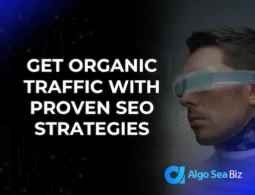How Much Does Organic Content Cost?
Have you ever wondered why some online content pops up without the “ad” label? That’s the magic of organic content. Organic content refers to any online material, like articles or videos, created without direct payment for its placement or promotion. In our fast-paced digital world, this kind of content has become a cornerstone for businesses aiming to build genuine connections with their audience.
What is Organic Content?
Organic content, as highlighted by Indeed, is the natural counterpart to paid content. While paid content includes advertisements and promoted posts that businesses pay to place, organic content stands on its own merit. It’s like comparing a billboard ad for a book to a friend’s genuine recommendation of the same book. One is paid to be there, and the other is there organically, because of its value.
Types of Organic Content
- Blog posts and articles: These are perhaps the most common form of organic content. Well-researched and relevant articles can drive traffic to websites and position brands as thought leaders in their industry.
- Social media updates: Think of your regular posts on platforms like Facebook, Twitter, or LinkedIn. These updates, whether they’re status posts, photos, or shared links, can engage your audience without any ad spend.
- Infographics: A visual representation of data or information. Infographics are shareable, easy-to-digest, and can quickly boost your content’s visibility.
- Videos: From how-to guides to interviews or behind-the-scenes looks, videos can capture attention and are especially popular on platforms like YouTube, Instagram, and TikTok.
- Podcasts: An audio program available for download or streaming. Podcasts can establish authority in a field and cater to audiences who prefer listening over reading.
Each of these types offers a unique way to connect with audiences, serving as the backbone of many successful digital marketing strategies.
Factors Influencing the Cost of Organic Content
When it comes to the price tag of organic content, several elements play a role:
- Content Complexity: Longer, in-depth pieces (often termed “long-form content”) tend to be more expensive than shorter, quick reads. They require more research, effort, and time.
- Research Requirements: Some topics demand extensive investigation, which can add to the cost. This includes sourcing credible data, speaking to experts, or even carrying out surveys.
- Multimedia Elements: Adding graphics, videos, or interactive elements can spike the price. These features often need specialized skills or tools.
- Domain Expertise of the Creator: A writer or content creator specialized in a particular field, like medicine or law, may charge more due to their niche expertise.
The Pricing Breakdown
When you’re ready to pay for organic content, here’s what to expect in terms of pricing:
General Pricing Models:
- Per word: Many writers charge based on the number of words. It’s a straightforward model, especially for articles and blog posts.
- Per hour: Some creators, especially those involved in multimedia content or research-intensive projects, might prefer hourly rates.
- Per project: A flat rate for the entire project, regardless of hours or word count.
Different types of organic content come with varying price tags. For example, infographics or video content usually cost more due to the involvement of design and editing tools.
Hidden Costs: Remember to factor in the “extras.” This can include charges for edits or revisions, subscription fees for research tools, or potential licensing fees for images or data.
Benefits of Investing in Organic Content
You might wonder: Why bother spending on organic content? Here’s why:
- Enhancing Brand Credibility: Genuine, non-promotional content can bolster your brand’s reputation. People trust information, not just ads.
- Building an Audience Without Ad Spend: Over time, you’ll draw a loyal audience who come for your content, not because of an ad they saw.
- Long-Term SEO Benefits: Well-optimized organic content can rank well on search engines. This means continuous traffic to your site without ongoing costs.
Investing in organic content is like planting a seed. It might take time to see the results, but once it grows, the benefits are long-lasting.
Tips for Budgeting for Organic Content
When you’re prepping your wallet for organic content, a little foresight can go a long way:
- Setting Clear Content Objectives: Know what you want to achieve. Is it brand awareness, engagement, or conversions? Your goals will guide your spending decisions.
- Prioritizing Content Types: Not all content resonates with every audience. Understand what your target group prefers. If they love videos more than blogs, that’s where your money should go.
- Re-purposing Content: Get more bang for your buck by using a piece of content in multiple ways. A blog post can be turned into an infographic, a podcast, or even a series of social media posts. This approach amplifies your content’s reach and maximizes ROI.
The Relationship Between Content Quality and Cost
Let’s break it down:
- Why Higher Quality Often Means Higher Cost: Premium content demands more research, better tools, and often, more experienced creators. These factors bump up the price.
- The Long-Term Value: While quality content might be pricier, it’s an investment. It tends to be evergreen, remains relevant for longer, and can consistently drive traffic or engage audiences over time.
DIY vs. Outsourcing: Cost Implications
Here’s the deal:
- DIY (Do It Yourself): Creating content in-house can save money. But it’s not just about writing or filming. You need to consider research, editing, design, and more. Plus, it’s time-consuming.
- Outsourcing: Hiring freelancers or agencies might seem more expensive initially. But they bring expertise to the table, often ensuring the content is top-notch and achieves your objectives. Over time, the investment can pay off in terms of quality and consistency.
Conclusion
Organic content isn’t just another line item in your budget—it’s a cornerstone of your brand’s online presence. As the digital landscape gets noisier, the brands that offer genuine, valuable content will stand out. So, as you chart out your content journey, be sure to factor in both costs and value. And remember, every penny spent on quality content is an investment in your brand’s future.
Got a story about your experiences with organic content costs? We’re all ears! Drop a comment below. And if you found this article helpful, don’t forget to subscribe or check out our other articles on digital strategies.










